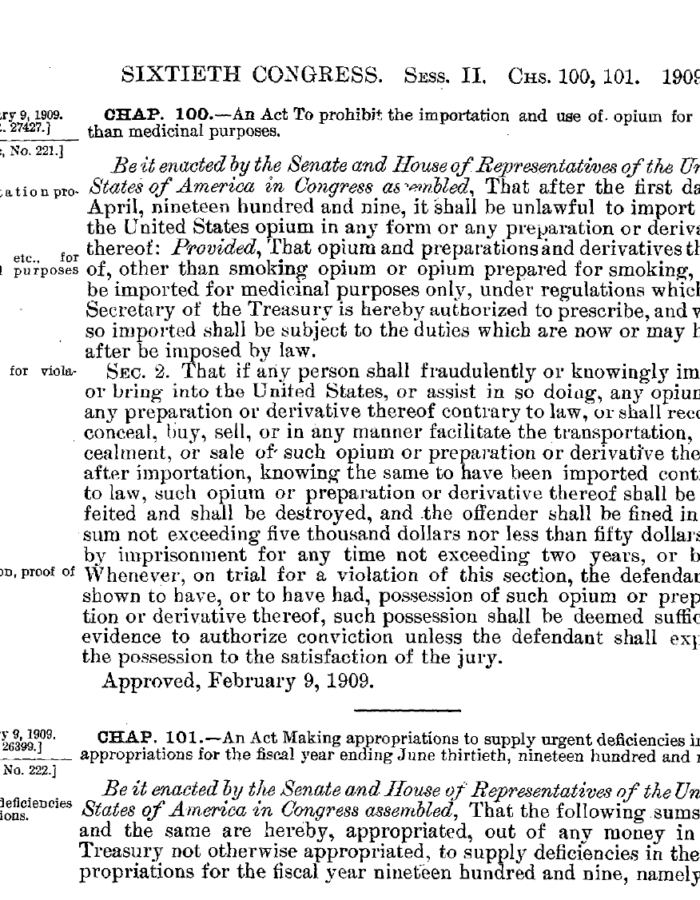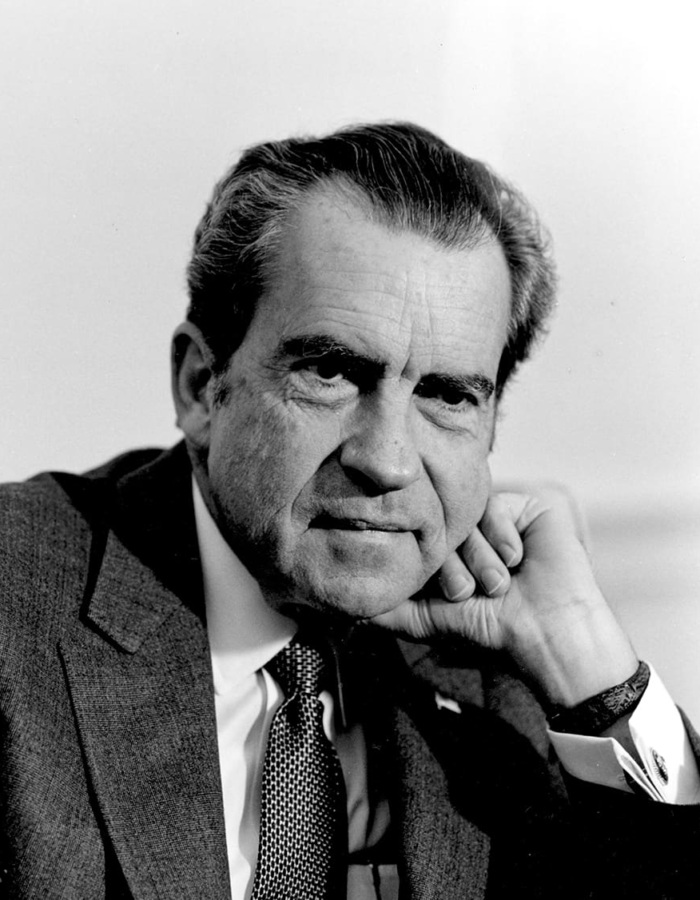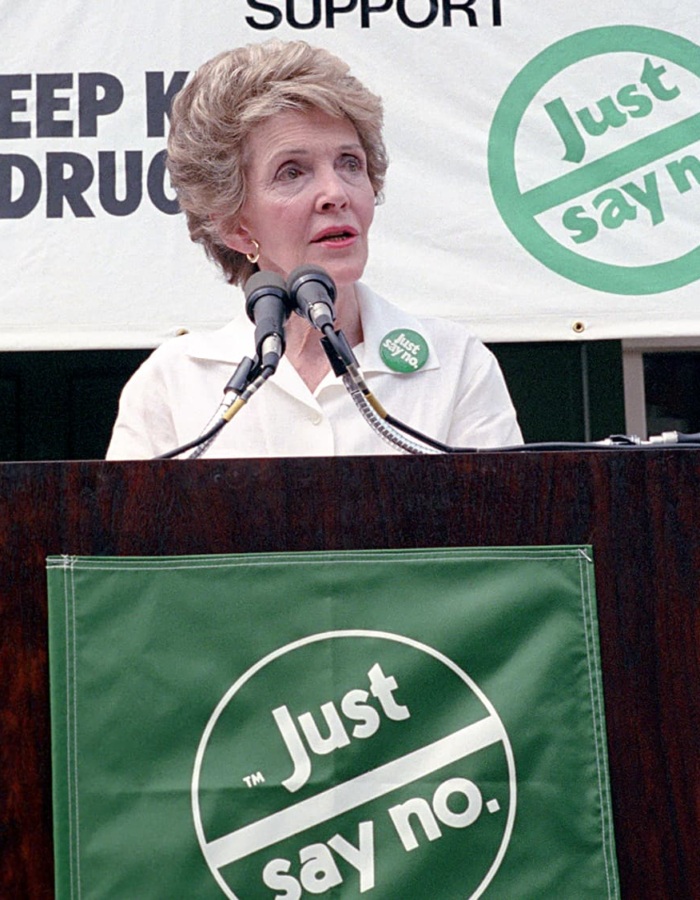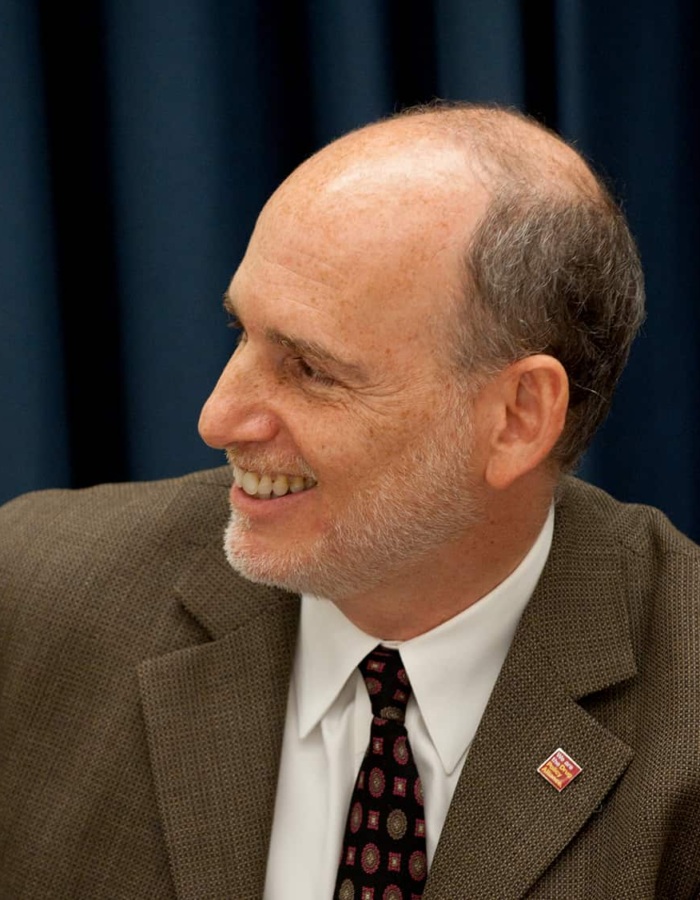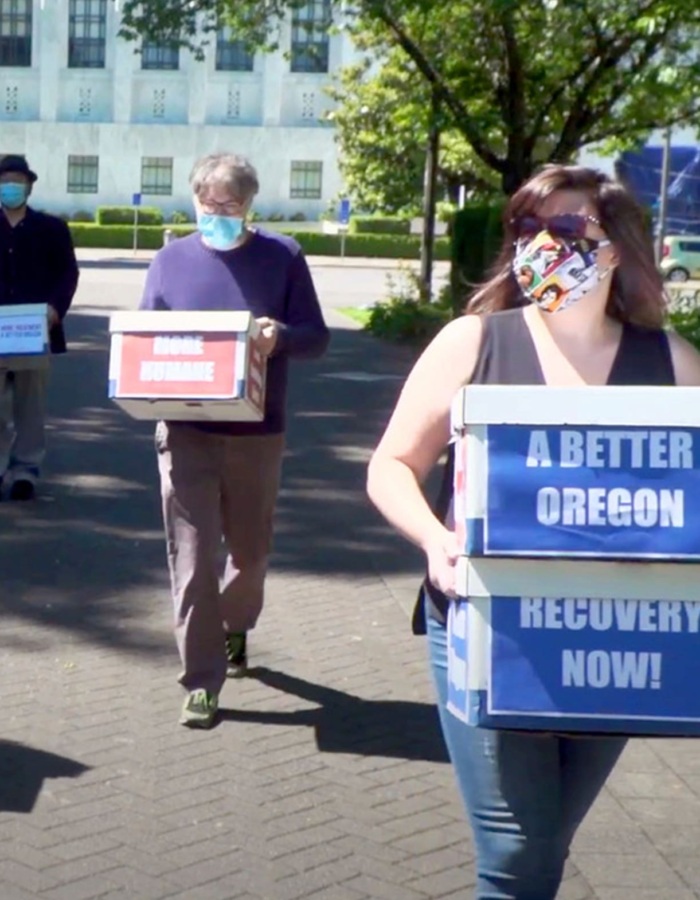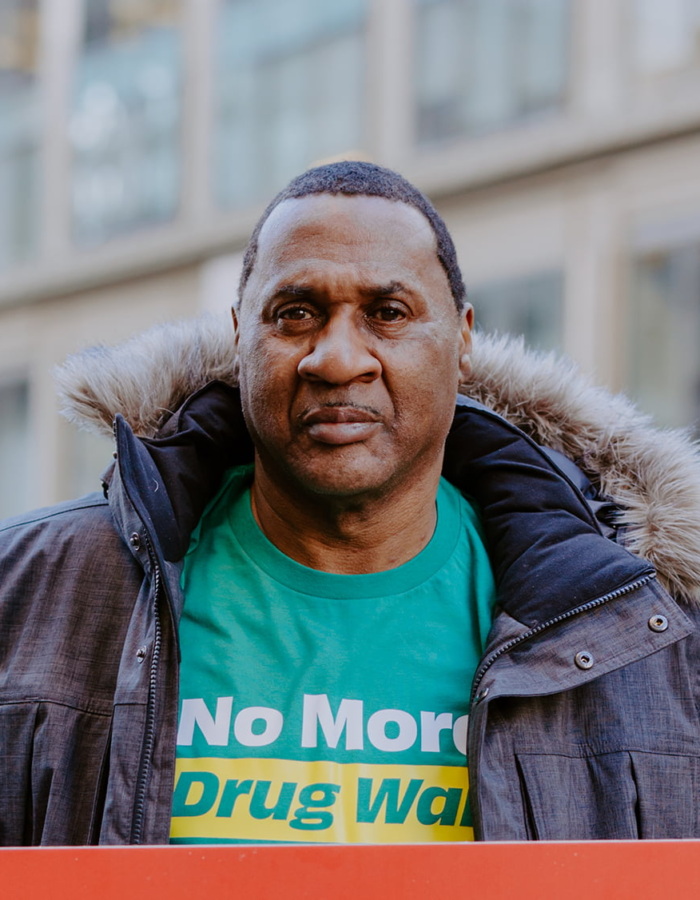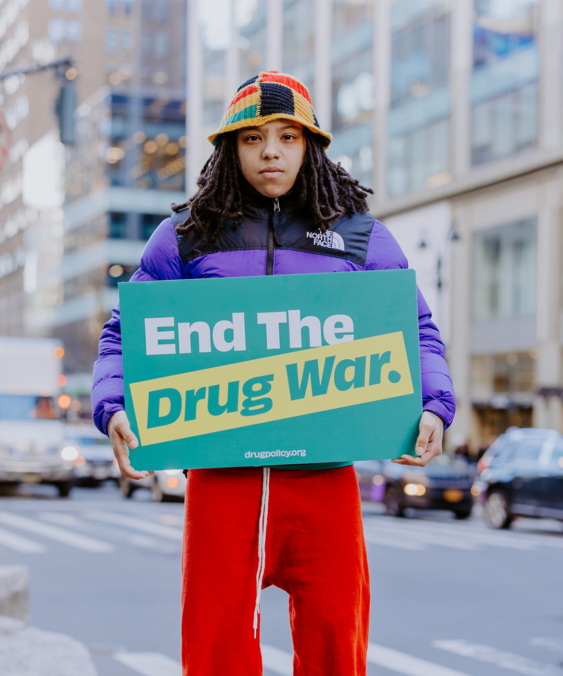The First U.S. Anti-Drug Law Targeted Chinese Immigrant Communities
The San Francisco Opium Den Ordinance of 1875 made it a misdemeanor to maintain or visit places where people smoked opium. These places were mainly in Chinese immigrant neighborhoods. Similar racially inflammatory state laws emerged. Then, the first federal drug law, the 1909 Smoking Opium Exclusion Act, prohibited importing and using opium.
Anti-Cocaine Laws Targeted Southern Black People
A a 1914 New York Times article, “NEGRO COCAINE “FIENDS” ARE A NEW SOUTHERN MENACE,” blamed “cocaine-crazed negroes” for “[inciting] homicidal attacks.” In 1914, Congress passed the Harrison Act, effectively outlawing opiates and cocaine. Experts testified that “most of the attacks upon white women of the South are the direct result of a cocaine-crazed Negro brain.”
First Federal Marijuana Law Targeted Mexican Immigrants
Harry Anslinger became the first commissioner of the Federal Bureau of Narcotics. He claimed marijuana caused psychosis and violence. Only one of 30 scientists agreed. Anslinger shared a letter with Congress, “I wish I could show you what [marijuana] can do to […] degenerate Spanish-speaking residents.” The 1937 Marijuana Tax Act was the first federal U.S. law to criminalize marijuana.
Nixon Signed the Controlled Substances Act
President Richard M. Nixon signed the Controlled Substances Act (CSA) into law in 1970. It classifies drugs into five “schedules” rated by medical benefits and level of potential for abuse. The classification ended up relying on fear and stigma rather than science. This resulted in the seemingly arbitrary scheduling we still see today.
Nixon Declared a War on Drugs
In June 1971, President Nixon declared a “war on drugs.” He increased the size, presence, and funding of federal drug control agencies. He pushed through measures such as mandatory sentencing and no-knock warrants. In 1973, he created the Drug Enforcement Administration (DEA).
Nixon Ignored His Advisors’ Call to Decriminalize Marijuana
President Nixon placed marijuana in Schedule 1 temporarily, pending review by a commission he appointed. In 1972, the National Commission on Marihuana and Drug Abuse unanimously recommended decriminalizing personal use. President Nixon ignored the report, but 11 states decriminalized possession.
President Carter Elected—Simple Marijuana Possession is Decriminalized
In January 1977, President Jimmy Carter was inaugurated on a campaign platform that included marijuana decriminalization. In October 1977, the Senate Judiciary Committee voted to decriminalize possession of up to an ounce of marijuana for personal use.
Just Say No Campaign Highlights Disproven “Abstinence Only”
In 1981, Nancy Reagan began a highly publicized anti-drug campaign, “Just Say No.” Los Angeles Police Chief Daryl Gates founded the DARE drug education program. Gates said, “Casual drug users should be taken out and shot.” D.A.R.E was adopted nationwide despite the lack of evidence of its effectiveness.
Attitudes Towards Drugs Reverted to Punishment
In the 1980s, proposals to decriminalize marijuana fizzled out. Parents became more concerned about teen drug use. Media portrayals of people addicted to “crack” fueled public concern. President Reagan expanded the drug war. Incarceration for nonviolent drug offenses increased from 50,000 in 1980 to over 400,000 by 1997.
Political Hysteria Led to Mass Incarceration
In the late 1980s, political pressure and media-focus surrounding crack cocaine triggered a wave of federal and state drug laws. These laws rapidly accelerated the growth of the U.S. prison population. In 1985, only 2–6% of Americans viewed drug abuse as a major national issue. By 1989, that number had surged to 64%, driven largely by sensationalist media coverage and political rhetoric. However, less than a year later, public concern plummeted to under 10% as the media shifted focus. Despite the fading public fear, the policies remained — and so did the rising incarceration rates.
Clinton Reversed Promises of Treatment Over Incarceration
In 1992, President Bill Clinton campaigned on treatment over incarceration. Yet, he rejected a Sentencing Commission recommendation to cut the sentencing disparity between crack and powder cocaine. He also rejected his health secretary’s advice to end the federal ban on funding syringe access programs.
The Drug Policy Alliance is created.
In 1994, Ethan Nadelmann founded The Lindesmith Center as the first U.S. project of George Soros’ Open Society Institute. In 2000, the growing Center merged with the Drug Policy Foundation to create the Drug Policy Alliance (today’s leading drug policy reform organization).
George W. Bush Funded the Drug War
President George W. Bush rapidly escalated the militarization of domestic drug law enforcement. His drug czar focused on marijuana and student drug testing. Drug use remained constant and overdose deaths rose rapidly. By the end of Bush’s term, there were about 40,000 paramilitary-style SWAT raids on Americans every year. Most were for nonviolent drug law offenses.
Harm Reduction Efforts Grew in Response to Overdose Crisis
President Barack Obama reduced the sentencing disparity between crack and powder cocaine. He also ended the ban on most federal funding for syringe access programs and federal interference with state medical marijuana laws. By 2021, most states had enacted laws to increase access to the overdose reversal medication naloxone, as well as “911 Good Samaritan” laws.
Trump Called for Harsher Sentences for Drug Involvement
In 2018, President Donald J. Trump called for the death penalty for people who sell drugs. He initiated a policy placing fentanyl-related substances on Schedule 1 without testing these substances for harm or medical benefits (including the ability to reverse opioid overdoses). He resurrected disproven “Just Say No” messaging aimed at youth.
First U.S. Law to Decriminalize Drugs Passed
In 2020, Oregonians overwhelmingly voted for Measure 110. This landmark ballot initiative made Oregon the first place in the US to decriminalize possession of small amounts of all drugs. As a result, during its implementation thousands fewer Oregonians were arrested for drug possession and hundreds of millions of dollars in Measure 110 funds expanded addiction services. Unfortunately, drug possession in Oregon was recriminalized after a well-funded disinformation campaign. But Oregon is in a better place than it was prior to Measure 110, when penalties for possession were more severe. Even the proponents of its rollback admitted that Measure 110 successfully expanded service provision, agreeing the services it created must stay in place.
U.S. States Continue to Legalize Marijuana
In 2024, 88 percent of Americans supported legalizing marijuana for medical or recreational use. As of March 2025, marijuana is legal in 39 states for medical use and 24 states for recreational use. Legalization can lead to fewer arrests, improved medical access for patients, and more opportunities to clear past convictions, removing barriers to housing, jobs, and education. But in 2024, marijuana remains federally criminalized despite calls for decriminalization and legalization.
Overdose Prevention Centers Open in the U.S.
In November 2021, NYC became the first jurisdiction in the U.S. to authorize OPCs. OnPoint NYC opened two sites. After a year and a half, staff had reversed nearly 850 overdoses, and over half of participants accessed additional care like naloxone access, counseling, and medical care. In June 2024, Vermont authorized an OPC pilot. In December 2024, Rhode Island opened their first authorized OPC.
The U.S. Ramps up Drug Enforcement
Due to the rise of fentanyl, the overdose crisis, and undesirable city street conditions, support for punitive responses grew. For example, California passed Prop 36 in 2024, making possession of “hard drugs” a felony. The following year, in 2025, the federal government enacted deep cuts to Medicaid and other public health programs—jeopardizing access to lifesaving addiction treatment and overdose prevention services. These moves signal a renewed emphasis on criminalization over care, raising concerns among advocates and health experts who warn of repeating past policy failures.
